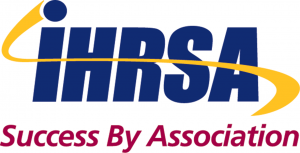Gyms Ramp Up Safety and Cleaning Protocols to Welcome Back Members
Posted: June 25, 2020 in IHRSA
 IHRSA: Success By Association
IHRSA: Success By Association
BOSTON, MA – Most of the nearly 50,000 U.S. health clubs were mandated to close in mid-March. Fitness professionals have spent this time increasing their cleaning and safety protocols and creating safety plans to share with their regional authorities to receive permission to reopen.
Jason Reinhardt, owner of five Go M.A.D. (Make a Difference) fitness centers across two states, says when gym-goers are ready to return, clubs will be ready and able to provide a great exercise experience in a safe, clean, and thoughtful manner.
“Those of us who chose the fitness industry as a career believe in the health benefits of exercise and want to deliver a healthy option to our communities,” said Reinhardt. “Therefore, the health and safety of our members, staff, and community is our top priority.”
Clubs are using a four-pronged framework to plan safe and thoughtful reopening protocols while working with local health boards. IHRSA developed this framework to help clubs mitigate risk and provide a safe and supportive place for physical activity.
What will gym-goers notice when they return?
- Increased Cleaning;
- Social Distancing Policies;
- Employee and Member Training;
- Masks Encouraged or Required.
Many clubs have gone touchless and are encouraging members to use a mobile app to check-in. Some clubs have installed plexiglass barriers and removed or rearranged equipment and lobby furniture to comply with distancing policies. Another protocol members can expect is screening upon entering the club with questions, temperatures, and symptom checks.
Many states have requirements that restrict entry to a business if you have a fever. Some clubs are taking extra precautions. Sports Academy & Racquet Club in Logan, UT, one of the first U.S. clubs to reopen, posted an online memo to members and staff stating, “any staff or club member with any symptoms such as coughing, shortness of breath, fever, chills, or sneezing with nasal discharge should not come to the club. Anyone exhibiting these symptoms will be asked to leave immediately.”
Each reopening plan IHRSA looked at outlined intense cleaning protocols and ensured adequate staffing and supplies to execute these enhanced efforts. Plans include frequently cleaning equipment and surfaces, assigning staff zones of the club to clean and enforce distancing guidelines, or setting exercise time-blocks between which the club is emptied, cleaned, and ventilated.
To help members follow social distancing protocols, clubs are abiding by national and regional authorities.
- Limiting the number of people who can be in the facility,
- Increasing signage or floor markers to indicate one-ways or spacing,
- Adding barriers between, rearranging, or removing equipment, and
- Restricting class sizes.
Finally, for an added layer of protection and per CDC recommendations, many clubs encourage employees and members to wear a mask or cloth face covering to help protect against the spread of coronavirus.
Clubs are going above-and-beyond to keep their members and staff safe, but gym-goers have a part to play too. Increased signage will remind everyone of new protocols, to wash their hands frequently, and to sanitize equipment before and after use.

